
How to Use MPPT SCC: Examples, Pinouts, and Specs
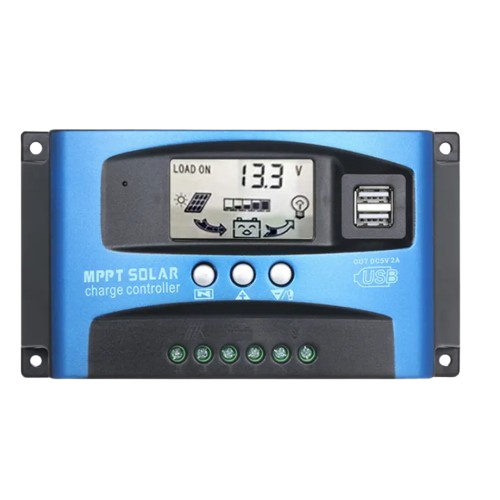
 Design with MPPT SCC in Cirkit Designer
Design with MPPT SCC in Cirkit DesignerIntroduction
The Maximum Power Point Tracking (MPPT) Solar Charge Controller is an advanced charging device designed to optimize the efficiency of solar power systems. It dynamically adjusts the working point of the solar panels to ensure they operate at their maximum power point, thus extracting the most energy under various conditions. This component is essential in applications such as off-grid solar systems, residential solar setups, and remote power stations.
Explore Projects Built with MPPT SCC
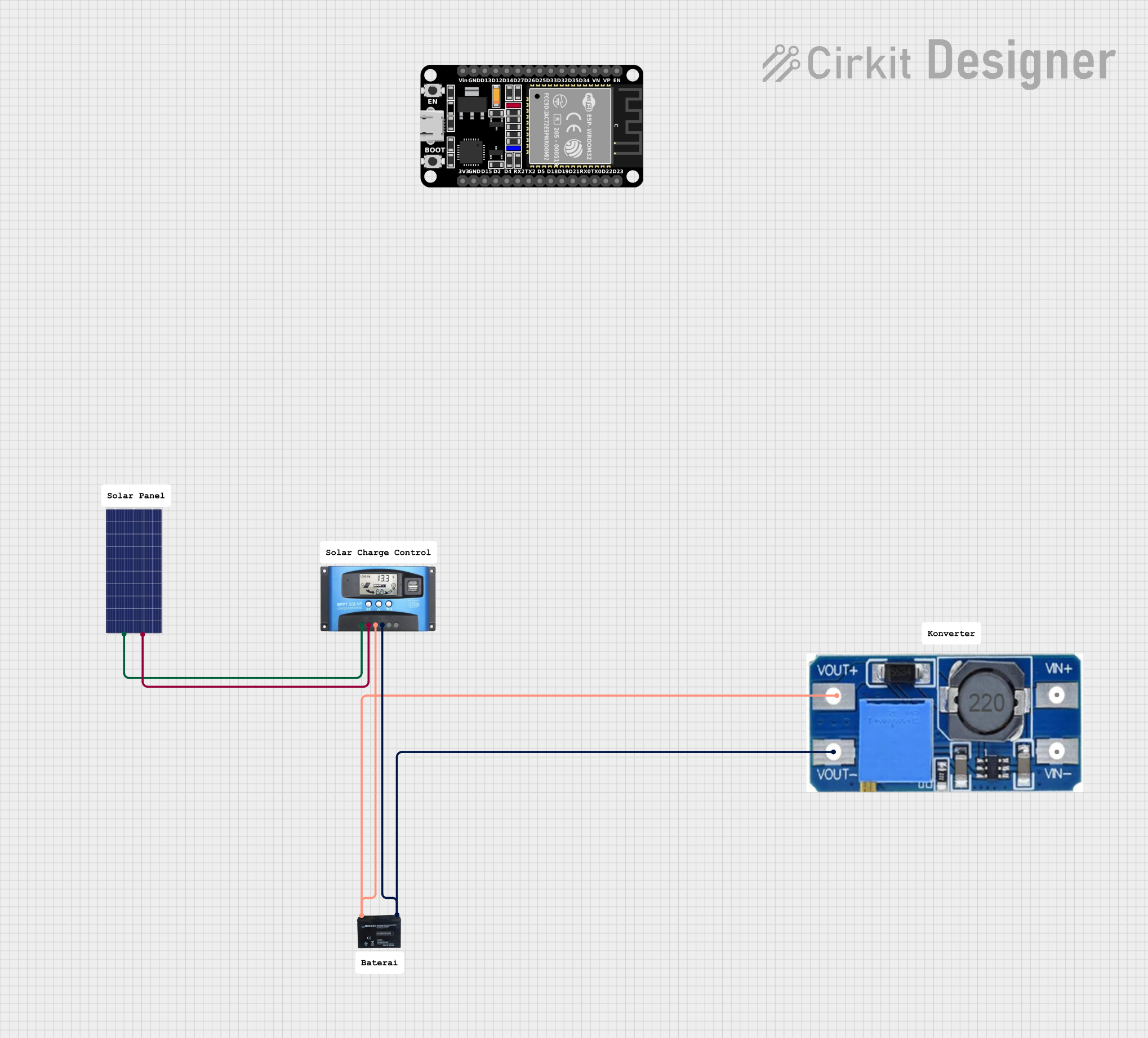
 Open Project in Cirkit Designer
Open Project in Cirkit Designer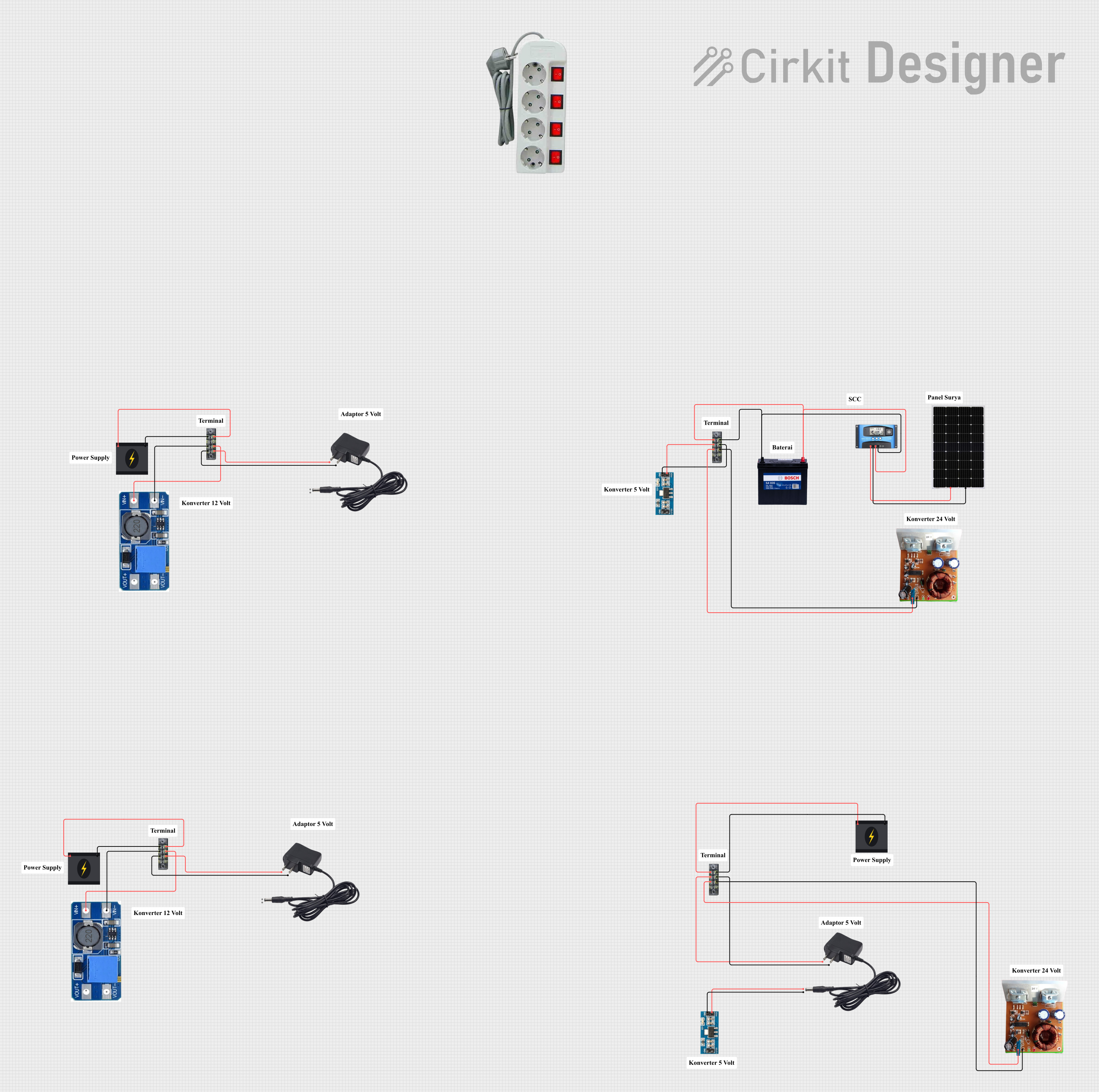
 Open Project in Cirkit Designer
Open Project in Cirkit Designer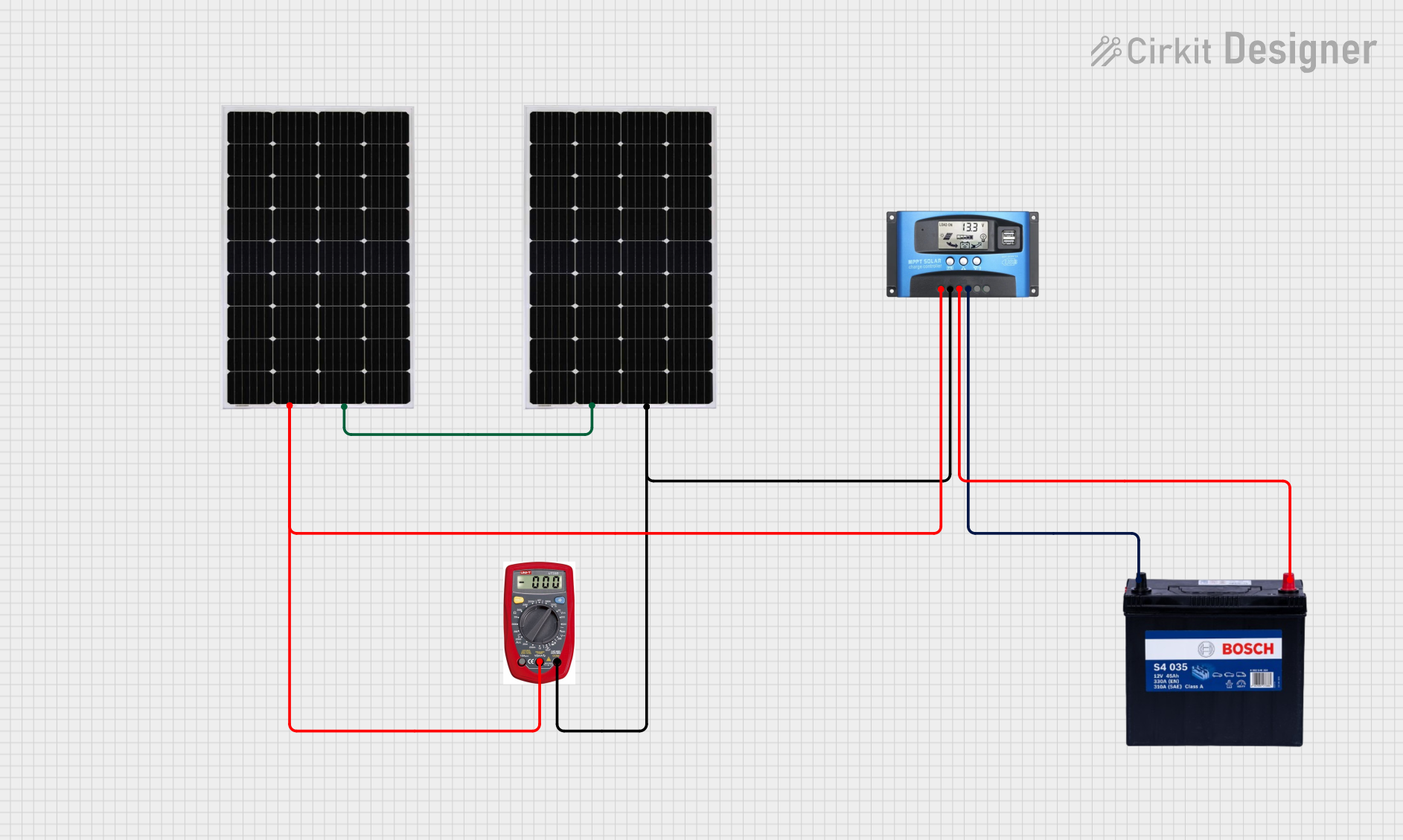
 Open Project in Cirkit Designer
Open Project in Cirkit Designer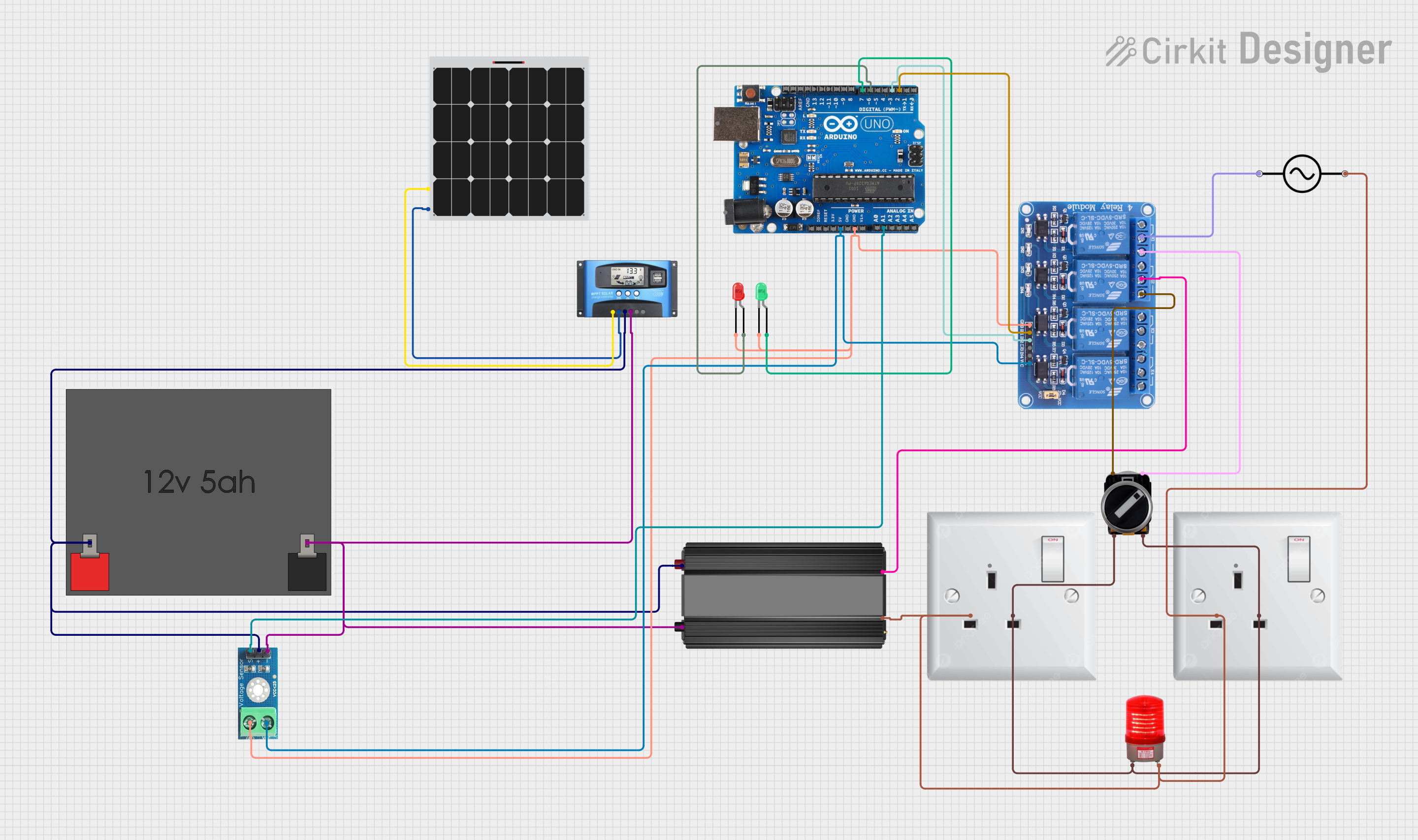
 Open Project in Cirkit Designer
Open Project in Cirkit DesignerExplore Projects Built with MPPT SCC

 Open Project in Cirkit Designer
Open Project in Cirkit Designer
 Open Project in Cirkit Designer
Open Project in Cirkit Designer
 Open Project in Cirkit Designer
Open Project in Cirkit Designer
 Open Project in Cirkit Designer
Open Project in Cirkit DesignerTechnical Specifications
General Specifications
| Parameter | Specification | Notes |
|---|---|---|
| Maximum PV Input Voltage | XX V | Exceeding this may damage the SCC |
| Maximum Charging Current | XX A | |
| Maximum Output Power | XX W | |
| Operating Temperature | -XX to XX°C | |
| Efficiency | Up to XX% | At optimal conditions |
| Battery Type Compatibility | Lead Acid, Li-ion, etc. | Depending on model |
Pin Configuration and Descriptions
| Pin Number | Name | Description |
|---|---|---|
| 1 | PV+ | Positive terminal for solar panel input |
| 2 | PV- | Negative terminal for solar panel input |
| 3 | Battery+ | Positive terminal for battery connection |
| 4 | Battery- | Negative terminal for battery connection |
| 5 | Load+ | Positive terminal for load output |
| 6 | Load- | Negative terminal for load output |
| 7 | Temp Sensor | Connection for external temperature sensor (if applicable) |
| 8 | Remote Monitor | Port for remote monitoring accessories (if applicable) |
Usage Instructions
Connecting the MPPT SCC to a Circuit
- Safety First: Ensure all power sources are disconnected before making any connections.
- PV Panel Connection: Connect the positive and negative wires from the solar panel to the PV+ and PV- terminals, respectively.
- Battery Connection: Attach the positive and negative wires from the battery to the Battery+ and Battery- terminals, respectively.
- Load Connection: If you have a load (like lights or a pump), connect it to the Load+ and Load- terminals.
- Sensor and Monitoring (Optional): Connect any external temperature sensors or monitoring tools to their respective ports.
Best Practices
- Use appropriate wire sizes to handle the expected current and minimize voltage drop.
- Ensure all connections are tight and secure to prevent arcing or overheating.
- Install the SCC in a location protected from direct sunlight and moisture.
- Regularly clean the solar panels to maintain optimal performance.
Troubleshooting and FAQs
Common Issues and Solutions
- No Output to Load: Check all connections, ensure the battery is charged, and the load does not exceed the SCC's rating.
- Low Charging Efficiency: Verify that the solar panels are clean, properly angled, and free of shading.
- Overheating: Ensure the SCC is in a well-ventilated area and not exposed to high temperatures.
FAQs
Q: Can I use the MPPT SCC with any type of battery?
- A: The MPPT SCC is compatible with various battery types. Check the technical specifications for your model to ensure compatibility.
Q: How do I know if the MPPT SCC is working correctly?
- A: Most MPPT SCCs have indicator lights or a display showing the status of charging and system health.
Arduino UNO Connection Example
The following is an example of how to connect an MPPT SCC to an Arduino UNO for data monitoring purposes. This example assumes the SCC provides a serial data output that can be read by the Arduino.
#include <SoftwareSerial.h>
SoftwareSerial MPPTSerial(10, 11); // RX, TX
void setup() {
Serial.begin(9600); // Start the built-in serial port, usually for debugging purposes.
MPPTSerial.begin(9600); // Start the software serial port to communicate with the SCC.
}
void loop() {
if (MPPTSerial.available()) { // Check if data from SCC is available.
String sccData = MPPTSerial.readStringUntil('\n'); // Read the data until a newline is received.
Serial.println(sccData); // Output the data to the built-in serial port.
}
}
Note: The actual connection and code will vary based on the specific MPPT SCC model and its communication protocol. Always refer to the manufacturer's datasheet for accurate information.
Remember to keep code comments concise and within the 80-character line length limit. This example demonstrates how to read data from the SCC and output it for monitoring purposes.